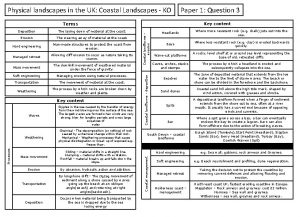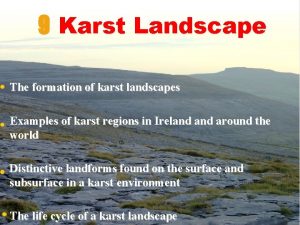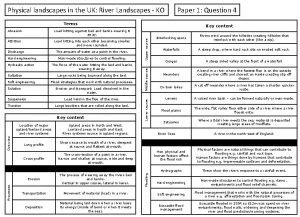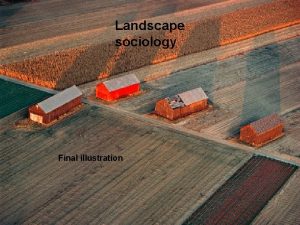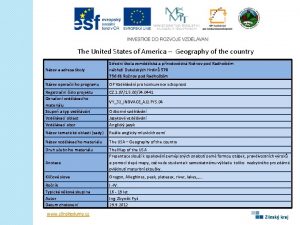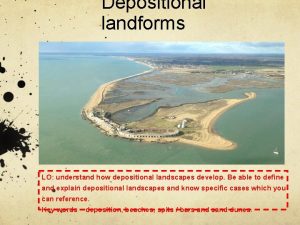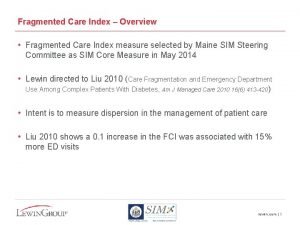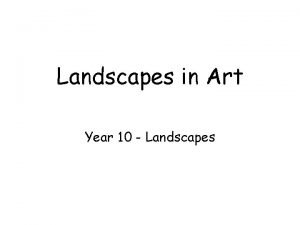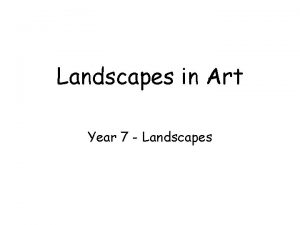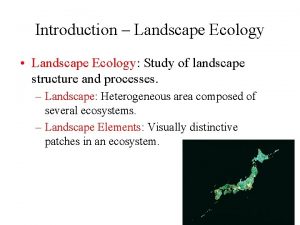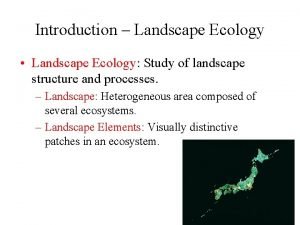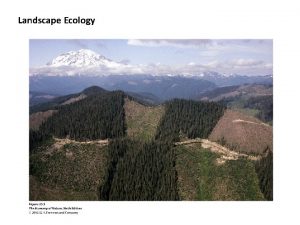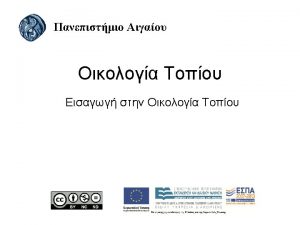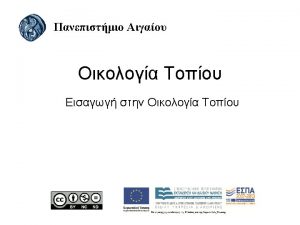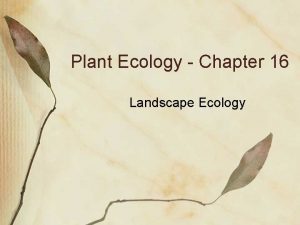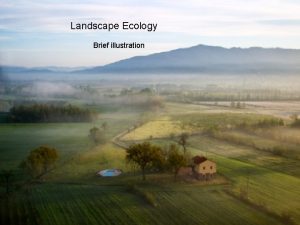Lecture 9 Fragmented landscapes Landscape ecology Agroecology Fragmented














- Slides: 14

Lecture 9 Fragmented landscapes Landscape ecology Agroecology


Fragmented landscapes Macropterous Carabidae Dimorphic Carabidae Nebria brevicollis Brachypterous Carabidae Notiophilus biguttatus Carabus nemoralis Not nested High species turnover Predictable species occurrences Highly nested Slightly nested Moderate species turnover Low species turnover Extinction driven system Random system Idiosyncratic species Colonization driven system Colonization Persistence

Glanville fritillary Melitaea cinxia

The metapopulation of Melitaea cinxia

Mainland – island pattern Patchy regional distribution A combination of these patterns Patchy regional distribution without dispersal Different types of metapopulations

The Lotka – Volterra model of population growth Levins (1969) assumed that the change in the occupancy of single spatially separated habitats (islands) follows the same model. Assume P being the number of islands (total K) occupied. Q= K-P is then the proportion of not occupied islands. m is the immigration and e the local extinction probability. Immigration At equilibrium d. P/dt = 0 Emigration

The basic Levins model The basic function of theory of island colonization of Mc. Arthur and Wilson The models describe changes in species numbers and occupancies in time The last model describes the changes occurrence probability on patch i at colonization rate m and extinction rate e Additional „canonical’ assumptions The basic model of metapopulation ecology describes the probability of occurrence in terms of mean patch distances dij, the average migration distance a, and the source island area Aj

What does metapopulation ecology predict? Blue: occurrences Red absences Occurrences of Hesperia comma in fragmented landscapes in southern England (from Hanski 1994) Line: 50% chance to occur In fragmented landscapes occupancy declines nonlinear with decreasing patch area and with decreasing conncetivity There is a lower threshold of regional (metapopulation) extinction. This threshold can be predicted from the Levin’s model if species dispersal rates are known.

Fraction of occupied networks 1 0. 8 Data from the Glanville Fritillary redrawn from Thomas and Hanski (1997). 0. 6 0. 4 0. 2 Theoretical threshold 0 0 10 20 30 40 Number of patches per network The fraction of occupied networks depends on the number of patches in a network. Bełow a certain threshold the species goes extinct.

Regional extinction times TR: regional extinction time TL: local extinction time K : regional number of patches p : Mean number of occupied patches Median time to extinction Long term survival is only possible when the average proportion P/K of occupied patches is larger than 3 K -1 /2: P > 3 K 1/2 1200 1000 800 600 400 200 0 0 1 2 3 4 5 6 7 0. 5 PK The model of Gurney and Nisbet (1978)(based on a stochastic form of the metapopulation model of Levins) predicts long term regional survival of a species if the average proportion of occupied patches is larger than 3 times K-0. 5.

Extinction times of Mazuran ground beetles Local extinction times are roughly proportional to local abundances Years 1 5 Local time to extinction 10 20 Occurrences Regional time to extinction Species Carabus granulatus 13 2. 23327 E+18 1. 11664 E+19 2. 23327 E+19 4. 46655 E+19 Pterostichus melanarius 13 2. 23327 E+18 1. 11664 E+19 2. 23327 E+19 4. 46655 E+19 Pterostichus strennus (Panzer) 13 2. 23327 E+18 1. 11664 E+19 2. 23327 E+19 4. 46655 E+19 Oxypselaphus obscurus (Herbst) 12 26489122130 1. 32446 E+11 2. 64891 E+11 5. 29782 E+11 Pterostichus diligens (Sturm) 11 3704282 18521410 37042820 74085640 Synuchus vivalis (Illiger) 10 22026 110132 220265 440529 Patrobus atrorufus (Stroem) 10 22026 110132 220265 440529 Pterostichus antracinus 9 854 4270 8541 17081 Pterostichus minor (Gyllenhal) 9 854 4270 8541 17081 Carabus nemoralis Muller 9 854 4270 8541 17081 Notiophilus palustris (Duftshmid) 7 21 107 214 428 Clivina fossor (Linnaeus) 7 21 107 214 428 Stomis pumicatus (Panzer) 7 21 107 214 428 Leistus rufomarginatus (Duftshmid) 5 3 17 35 70 Epaphius secalis (Paykull) 5 3 17 35 70 Notiophilus biguttatus (Fabricius) 3 1 7 15 29 Calathus melanocephalus (Linnaeus) 3 1 7 15 29 Calathus mollis (Marsham) 1 1 5 10 21 Dischirius globosus (Herbst) 1 1 5 10 21 Leistus ferrugineus (Linnaeus) 1 1 5 10 21 Carabus hortensis Linnaeus 1 1 5 10 21 Calathus micropterus (Duftschmid) 1 1 5 10 21 Calathus fuscipes (Goeze) 1 1 5 10 21 Carabus cancelatus Illiger 1 1 5 10 21 50 1. 11664 E+20 1. 32446 E+12 185214099 1101323 42703 1069 175 73 73 52 52

SPOMSIM

Today’s reading Metapopulation: http: //en. wikipedia. org/wiki/Metapo pulation Metapopulation research group: http: //www. helsinki. fi/science/meta pop/ Metapopulation and extinction: http: //faculty. plattsburgh. edu/thom as. wolosz/metapop. htm Landscape ecology: The state of art http: //www. edc. uri. edu/nrs/classes/nrs 534/ NRS_534_readings/Turner_Ann. Rev. Eco. Sy s_2005. pdf
 Introduction to agroecology:
Introduction to agroecology: 01:640:244 lecture notes - lecture 15: plat, idah, farad
01:640:244 lecture notes - lecture 15: plat, idah, farad Landscapes and landforms
Landscapes and landforms Karst landscape examples
Karst landscape examples Landscapes and landforms booklet
Landscapes and landforms booklet Uk physical landscapes
Uk physical landscapes Moraine
Moraine What makes a landscape distinctive
What makes a landscape distinctive Enchanted definition
Enchanted definition Fpm landscapes
Fpm landscapes Region 5 themes of geography
Region 5 themes of geography Appadurai etnorami
Appadurai etnorami Depositional landscape
Depositional landscape Limestone landscapes
Limestone landscapes Fragmented care definition
Fragmented care definition


